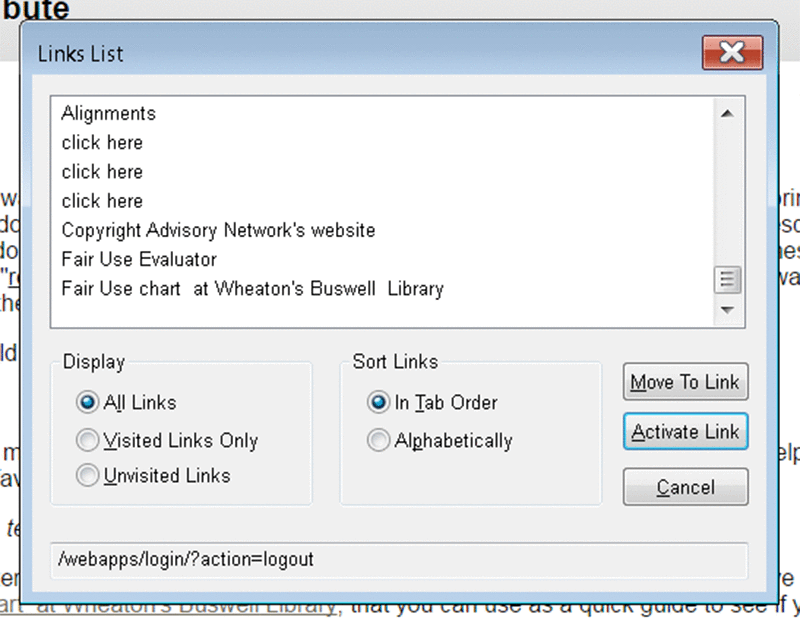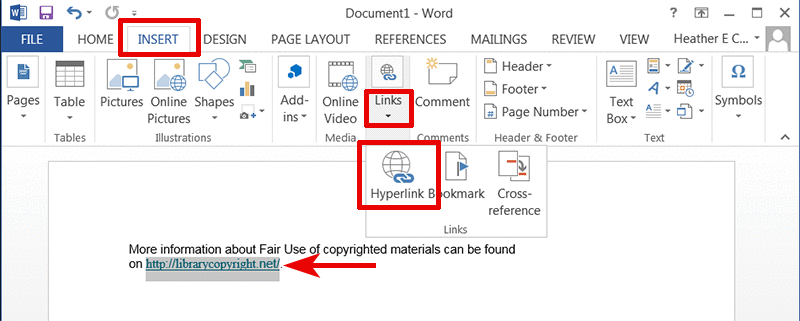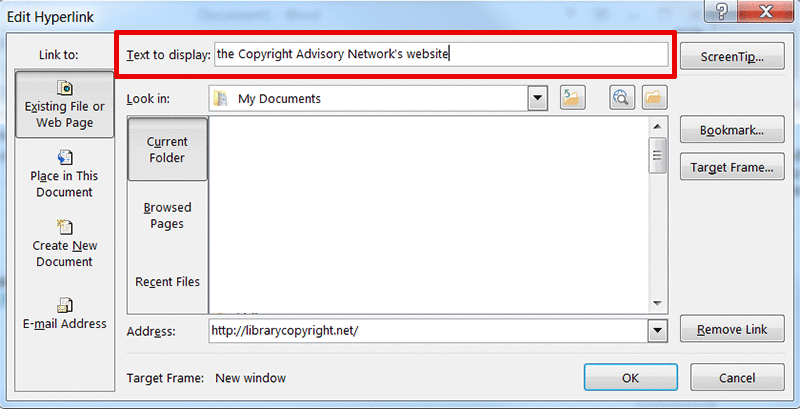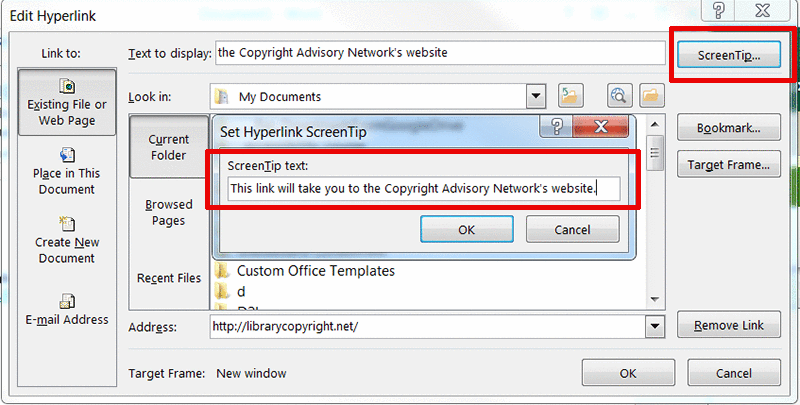19 Descriptive Links and Tool Tips in Word
Heather Caprette
At some point in a document or course creation, you’ll want to provide links to other websites or pages. Screen reader users can bring up a list of links on a page, much like they bring up lists of all the headings on a page, or landmarks. In JAWS, a screen reader user does this by pressing the Insert key followed by F7. It’s important to use descriptive text for your links that convey where the link is going to or it’s purpose, so that the links in this list make sense to a user taken out of context. You don’t want to use “click here” or “read more.” If there are more than one of these “click here” or “read more” links on a page, a screen reader user may not remember, provided she or he read the page, which “read more” went with which topic. It’s best to write the sentence in such a way to provide link text that will describe the purpose of the link and where it will lead to. The link text should be meaningful and unique from the other link text on the page.
In the following example I’ll show you what you should avoid and then how to rewrite and relink it for descriptive link text.
Avoid this type of writing and linking:
“For more information about Fair Use of copyrighted materials, click here. For information about a Fair Use Evaluator that can help you decide if your specific use of copyrighted material favors Fair User or not, click here. For a chart that shows a list of conditions that favor or oppose Fair Use, click here.
or
“More information about Fair Use of copyrighted materials can be found at http://librarycopyright.net/. If you would like to take a Fair Use Evaluator to determine if your use of copyrighted materials falls under Fair Use please visit http://librarycopyright.net/resources/fairuse/. There is a checklist of Fair Use chart at https://library.wheaton.edu/copyright/8 to see uses that favor Fair Use vs. oppose Fair Use.
How you could reword the text to provide descriptive, accessible text links:
“More information about Fair Use of copyrighted materials can be found on the Copyright Advisory Network’s website. If you have a question about whether a use falls under Fair Use or not, you can take the Fair Use Evaluator on the their site. There is also Fair Use chart at Wheaton’s Buswell Library, that you can use as a quick guide to see if your use of copyrighted materials is favoring or opposed to Fair Use.”
Key Takeaway
If you know that the Word file will be printed, you can include the URL for the link in parenthesis next to the descriptive link, so that sighted users can enter it into a browser if needed. So, our first sentence above would look like:
“More information about Fair Use of copyrighted materials can be found on the Copyright Advisory Network’s website ( http://librarycopyright.net/).”
The following is a screen capture of JAWS links list showing the links on this page. You can see the three vague “click here” links followed by the three descriptive text links. The later three are best practice.

Word often makes text that starts with http:// into a link automatically. You can change the link text that is displayed by highlighting the text and going under the Insert menu and selecting Links to bring up the Insert Hyperlink window. Below is an image of the URL http://librarycopyright.net/ highlighted (selected by dragging over it), the Insert tab options displayed, and Hyperlink options expanded.

After you select Hyperlink, in the window that pops-up, at the top where it says Text to display, describe where the link takes the user, or the function of it, e.g. “the Copyright Advisory Network’s website.”

In Word, the ScreenTip option is similar to adding a Title attribute to a link in html, or with the Blackboard’s content editor. The Title attribute or ScreenTip will show on screen to sighted users when the link is moused over or tabbed to, that is, when the link has focus. The text for the ScreenTip or Title attribute should be different from the link text. It is advisory in nature, so in this case, we can write at ScreenTip that says, “This link will take you to the Copyright Advisory Network’s website.” We’ll do this by clicking on the ScreenTip button to the right of the text entry box for Text to display. The image below shows the Set Hyperlink ScreenTip window with the ScreenTip text written in it. Be sure to click OK to close both Hyperlink editing pop-up windows to save your changes.


